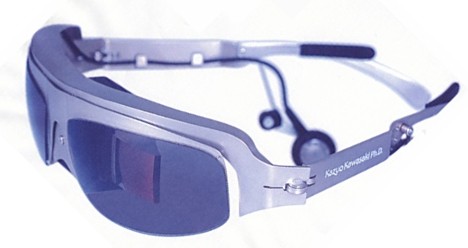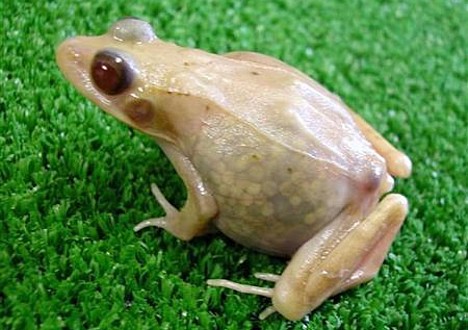 Mayu Yamamoto, a former researcher at the International Medical Center of Japan, has won this year's Ig Nobel Chemistry Prize for developing a method for extracting vanillin -- an ingredient in vanilla fragrance and flavoring -- from cow dung.
Mayu Yamamoto, a former researcher at the International Medical Center of Japan, has won this year's Ig Nobel Chemistry Prize for developing a method for extracting vanillin -- an ingredient in vanilla fragrance and flavoring -- from cow dung.
According to an AFP report, Yamamoto, who attended the award ceremony at Harvard University on October 4, said, "At first I thought it was a joke, but I came to the award ceremony hoping my research would become more widely known." Yamamoto says that widespread adoption of her method could help the environment because companies would make greater use of cow dung, which arguably contributes to global warming.
As a bonus prize, Toscanini's Ice Cream in Cambridge, Massachusetts has invented a new flavor -- Yum-A-Moto Vanilla Twist -- to honor Yamamoto, and is offering a free public tasting to its customers on October 5.
The annual Ig Nobel Prizes are meant to honor scientific achievements that "first make people laugh, and then make them think," according to the founders at science humor magazine Annals of Improbable Research.
Yamamoto is 12th Japanese person to receive an Ig Nobel Prize since the awards were established in 1991. Previous award-winning achievements from Japan include the invention of karaoke, which received the Peace Prize, and the Tamagotchi, which received the Economics Prize.
Check Improbable Research for a list of all the winners.
[Source: Asahi]



 On October 3, a team of American and Japanese researchers from the
On October 3, a team of American and Japanese researchers from the  The Japan Aerospace Exploration Agency (JAXA) and public broadcaster NHK have succeeded in capturing their first high-definition video of Earth from the Kaguya lunar explorer, a.k.a. SELENE (SELenological and ENgineering Explorer), an orbiter launched in mid-September on a mission to study the moon. (
The Japan Aerospace Exploration Agency (JAXA) and public broadcaster NHK have succeeded in capturing their first high-definition video of Earth from the Kaguya lunar explorer, a.k.a. SELENE (SELenological and ENgineering Explorer), an orbiter launched in mid-September on a mission to study the moon. (
 NEC Corporation has teamed up with Aida Engineering to develop a briefcase-sized DNA analysis system that allows police to perform comprehensive DNA testing at crime scenes in as little as 25 minutes. NEC is calling the device the world's first portable all-in-one DNA analysis system able to handle all DNA testing processes from extraction to analysis. Designed specifically for law enforcement officials and planned for release in 2008, the system measures 50 x 40 x 20 cm (20 x 16 x 8 in.), making it small enough to be carried to crime scenes or other locations where quick DNA analysis is required.
NEC Corporation has teamed up with Aida Engineering to develop a briefcase-sized DNA analysis system that allows police to perform comprehensive DNA testing at crime scenes in as little as 25 minutes. NEC is calling the device the world's first portable all-in-one DNA analysis system able to handle all DNA testing processes from extraction to analysis. Designed specifically for law enforcement officials and planned for release in 2008, the system measures 50 x 40 x 20 cm (20 x 16 x 8 in.), making it small enough to be carried to crime scenes or other locations where quick DNA analysis is required. 
